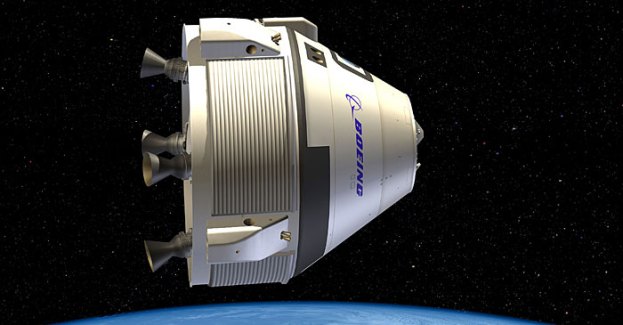
In just a few years, lucky Boeing workers will be able to add another skill to their résumés: spaceflight.
Boeing has decided to jump into the orbital spaceflight sector left open by NASA’s closing of the shuttle program. The company’s ship looks a bit like the space capsules of yore and will be lifted by Atlas 5 rockets on three flights in 2015. While not officially named by Boeing yet, it’s been dubbed CST-100, for “crew space transportation” and 100km, which is the generally accepted boundary between atmosphere and space. After a pair of unmanned test launches, the third flight will be piloted by a pair of Boeing’s own all the way to the International Space Station for a planned docking.
The CST-100 seats seven, and will be packaged with the Atlas 5 rocket largely because of the rocket’s 100% launch success. The first flight will be a proof-of-concept to put the craft in orbit, while the second will only go partway before initiating a practice abort procedure. If the first two flights go well, Boeing will strap some brave souls in and rocket them to the ISS. If everything goes to plan, Boeing expects to have commercial flights up and ready by 2016.
The goal is to produce a viable platform for regular and cost-effective space travel akin to what Boeing does in the aeronautics industry. The end of the space shuttle program has left a huge void for reliable space transportation, and Boeing thinks it can fill the demand of NASA and other science programs to put researchers in space. Boeing is shooting for a massive reduction on costs as compared to the shuttle program, which eventually would make private space travel as well as independent space laboratories a reality.
NASA is on board with the program, and is lending Boeing financial support according to the BBC. The end of the shuttle program never meant the end of sending NASA astronauts into space; instead, the agency felt it could use some of its budget to help nudge along commercial programs while saving cash overall. Ditching the space shuttle has given the opportunity for numerous private agencies to build their own potential spacecraft, including Boeing and Virgin Galactic. In this way, NASA gets to watch numerous development projects unfold and will have dibs on whatever seats are cheapest and most effective.
Photo via Boeing
Editors' Recommendations
- Boeing acknowledges 49 ‘gaps in testing’ in NASA Starliner test flight failure
- Here are all the science projects that SpaceX will deliver to the ISS
- Resupply mission to International Space Station aborted due to sensor error
- SpaceX’s Dragon craft is departing the ISS on Tuesday: Here’s how to watch
- Boeing’s first Starliner orbital test flight did not go as planned


